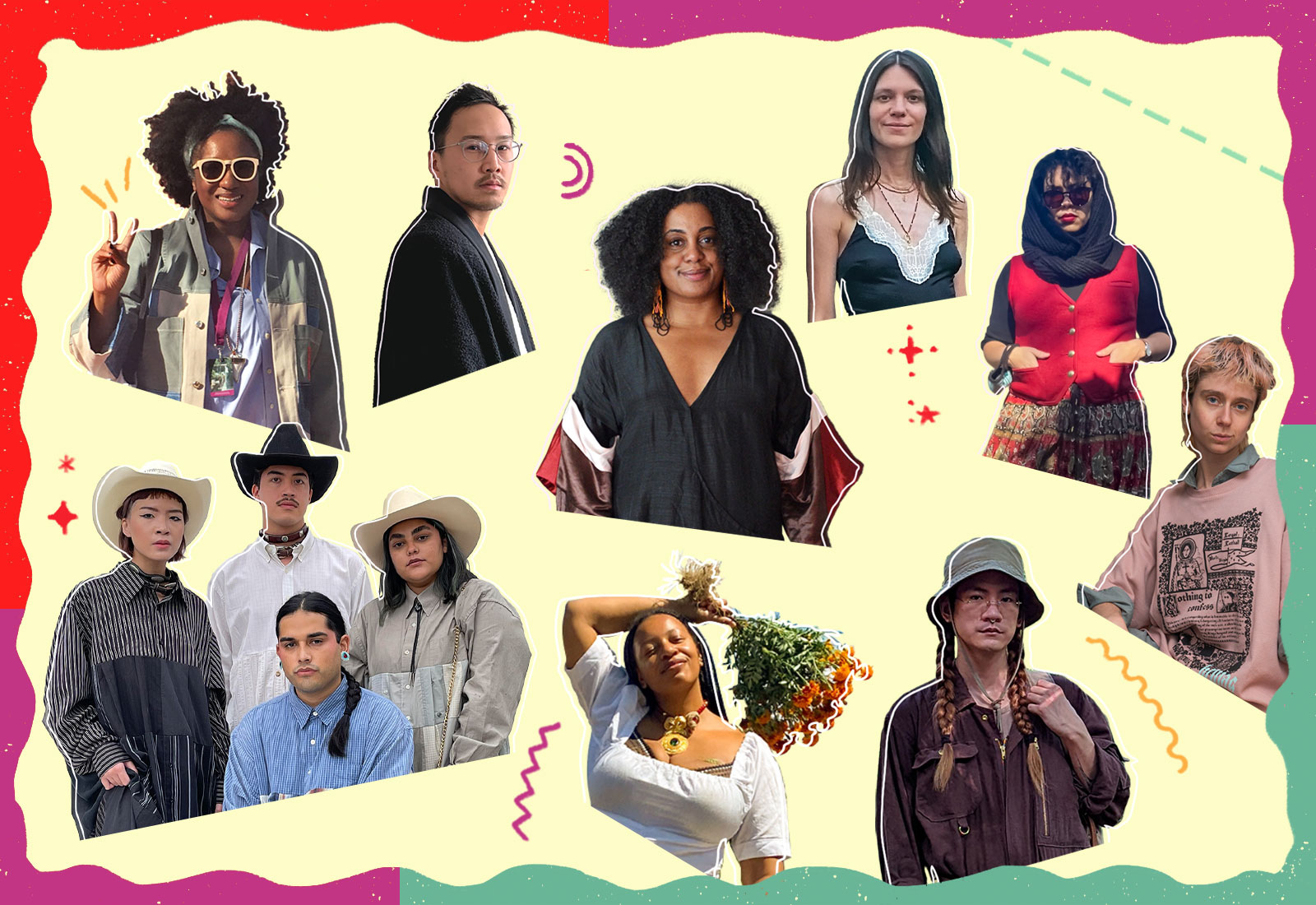This article is part of Ask Umbra’s guide on How to Dress for the Planet.
The conventional wisdom of our culture says that if you care about clothes too much, you are a frivolous person. But the science of climate change counters, not so gently, that we could stand to care a little more. The fashion industry is responsible for massive quantities of pollution, wasted resources, and worker abuses, all in service of a system that makes it all too easy to throw something cheap into a digital shopping cart, throw it on your body a couple of times, and then throw it away.
But the answer is hardly to clothe ourselves in burlap sacks and call it a day. There is arguably more joy, creativity, and satisfaction to be had in building a truly sustainable wardrobe — one that relies on secondhand, well and responsibly crafted materials, and mending and repurposing. And there is no shortage of inspiration to be found when it comes to what that wardrobe could look like.
To that end, we asked nine devotées of sustainable fashion who also happen to have incredible style to share one beloved outfit and how they sourced it. Please enjoy their photos and stories below.

Aja Barber
Writer and fashion consultant, AjaBarber.com
London, U.K.
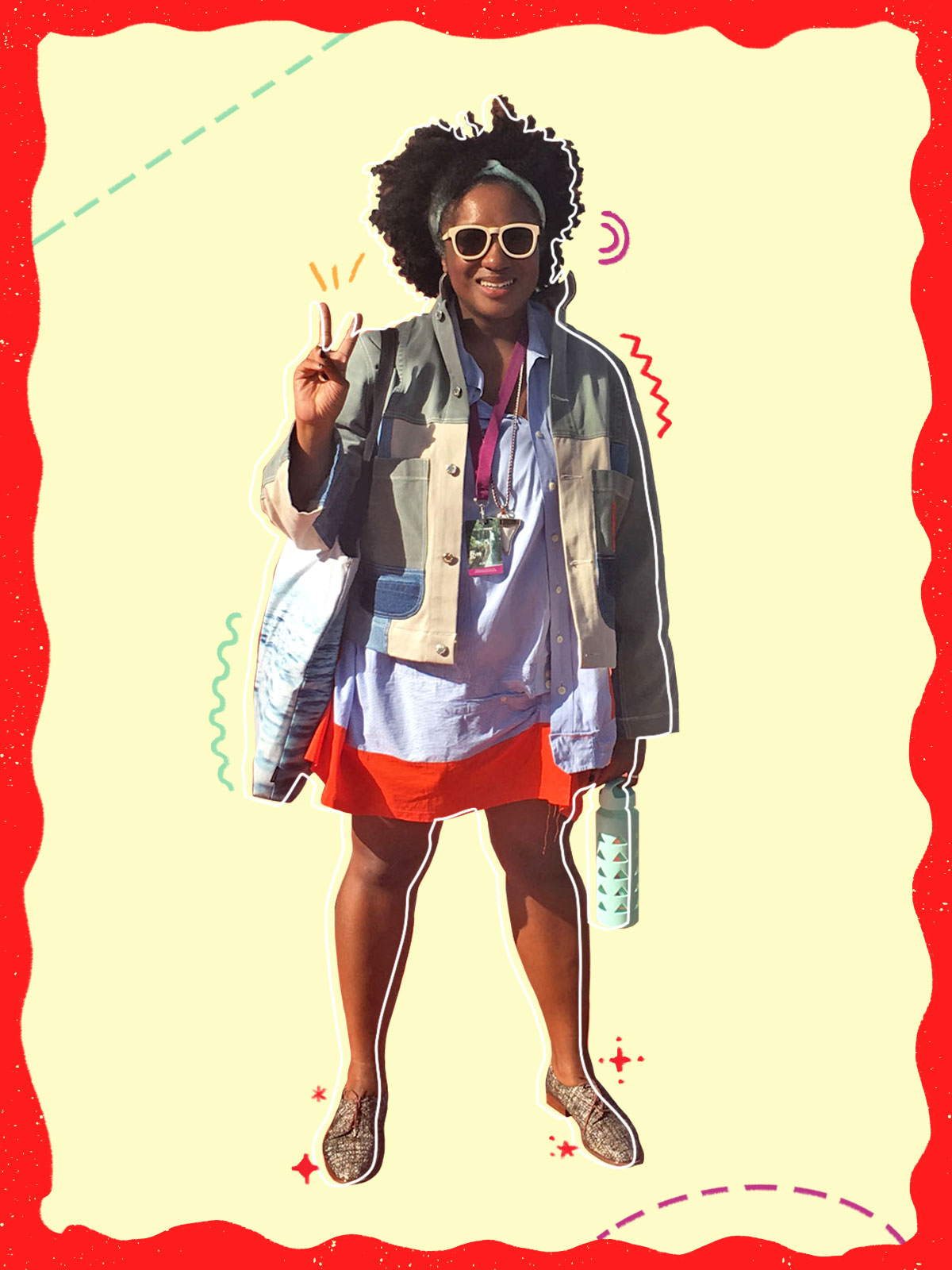
I picked this outfit because it’s all recycled textiles. The jacket is ReJean Denim, and they make amazing jackets out of recycled denim. The shirt-dress is Noel Puello, and they recycle shirts and turn them into glorious new garments. I’m a big fan of any designer who’s utilizing the current waste stream to create products that we’ll wear for even longer.

Francisco Diaz
Craftsman and sewist, Cisco Sews
Phoenix, Arizona
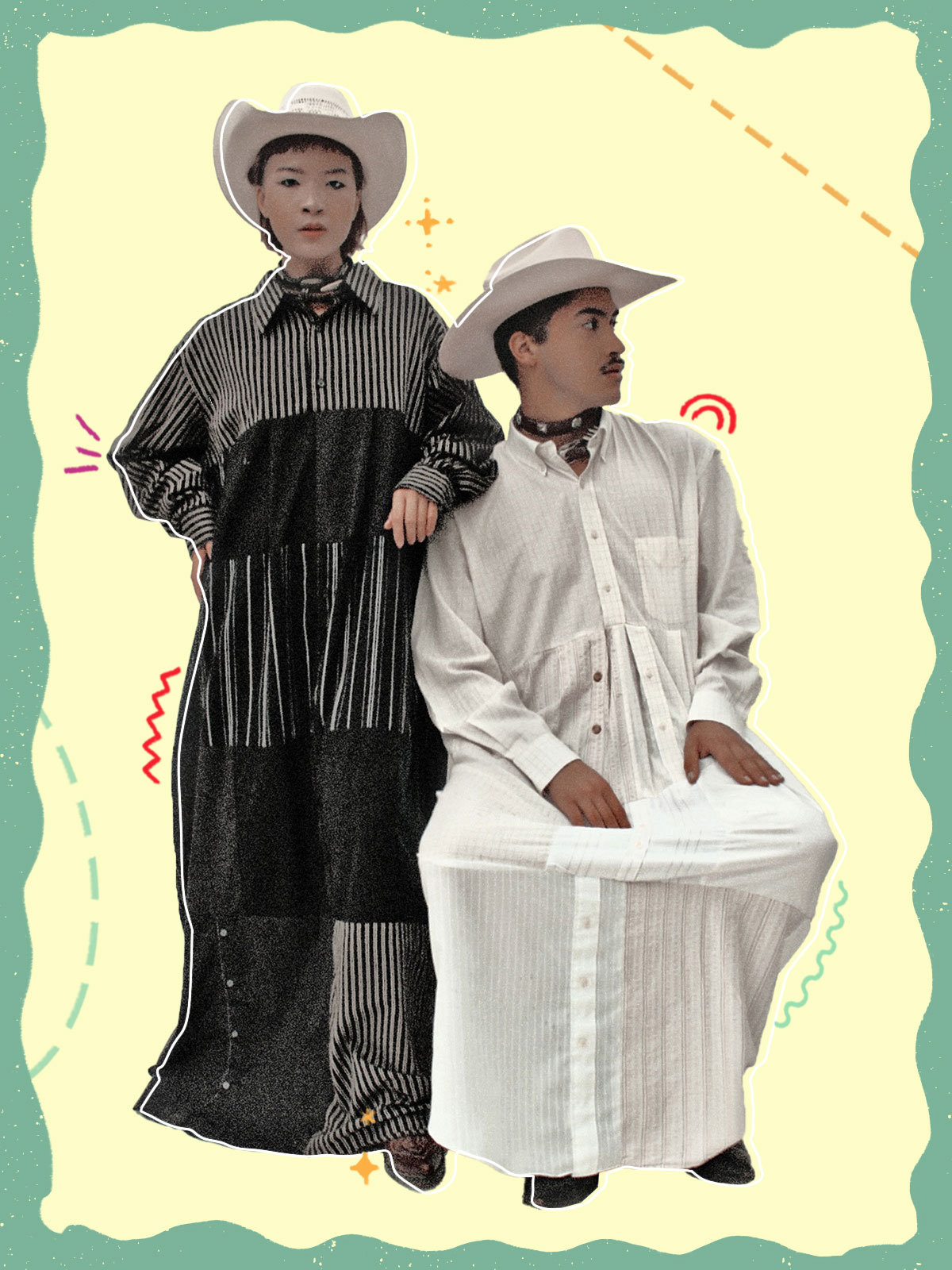
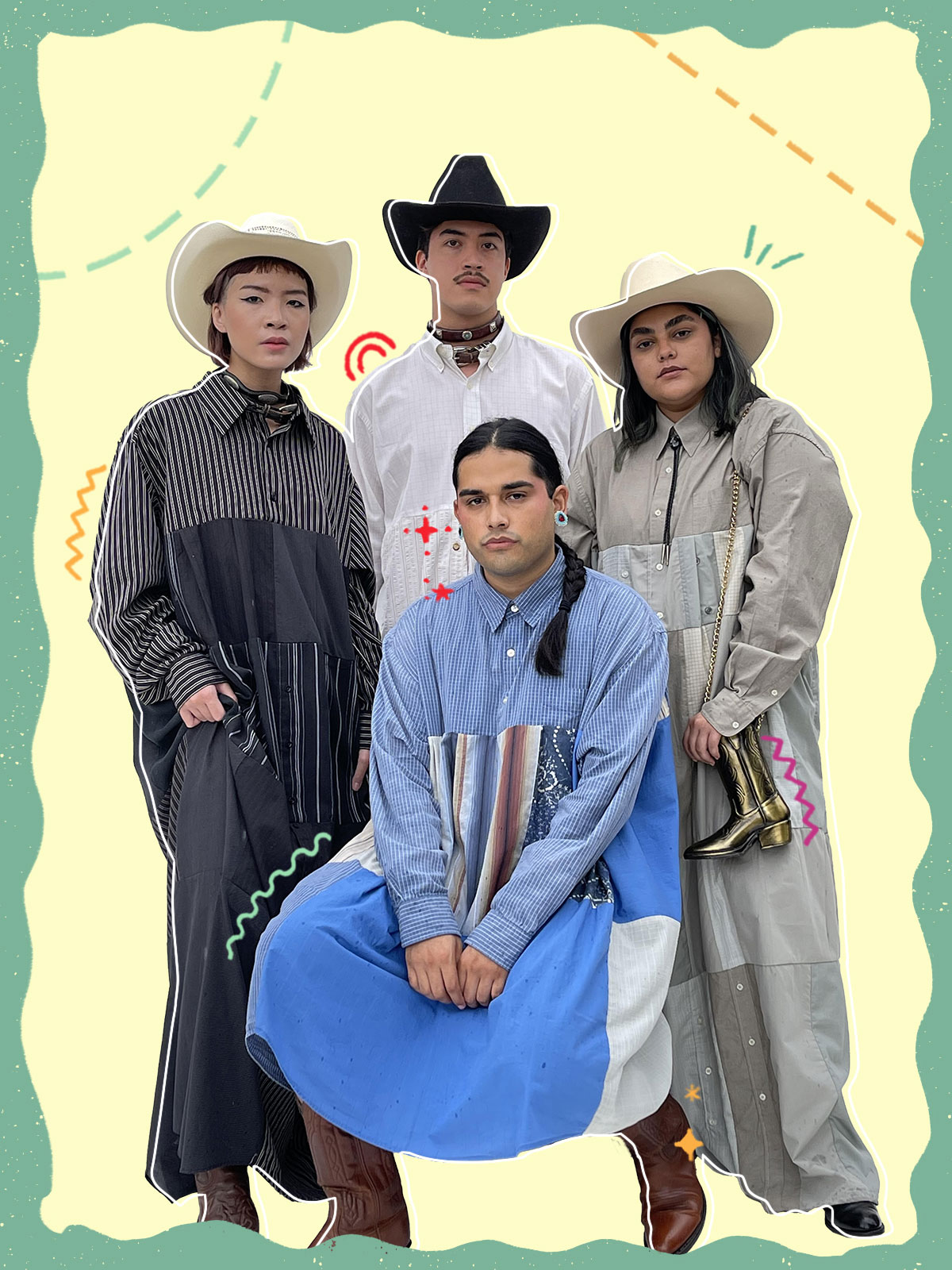
A highlight of my year was creating a small batch of patchwork dresses using 100 percent secondhand fabrics. I found all of the different materials at thrift stores around Phoenix. Usually it’s hard to go into a thrift store with something specific in mind that you’re looking for, so instead I focused on finding different colors on certain days, and chose that color based on what I was seeing a lot of on that day. One day I would look for only blue shirts, the next black, and then anything with stripes, and so on until I had enough to create five unique pieces inspired by the Southwest!

Julia Gall
Fashion Editor,
New York and New England
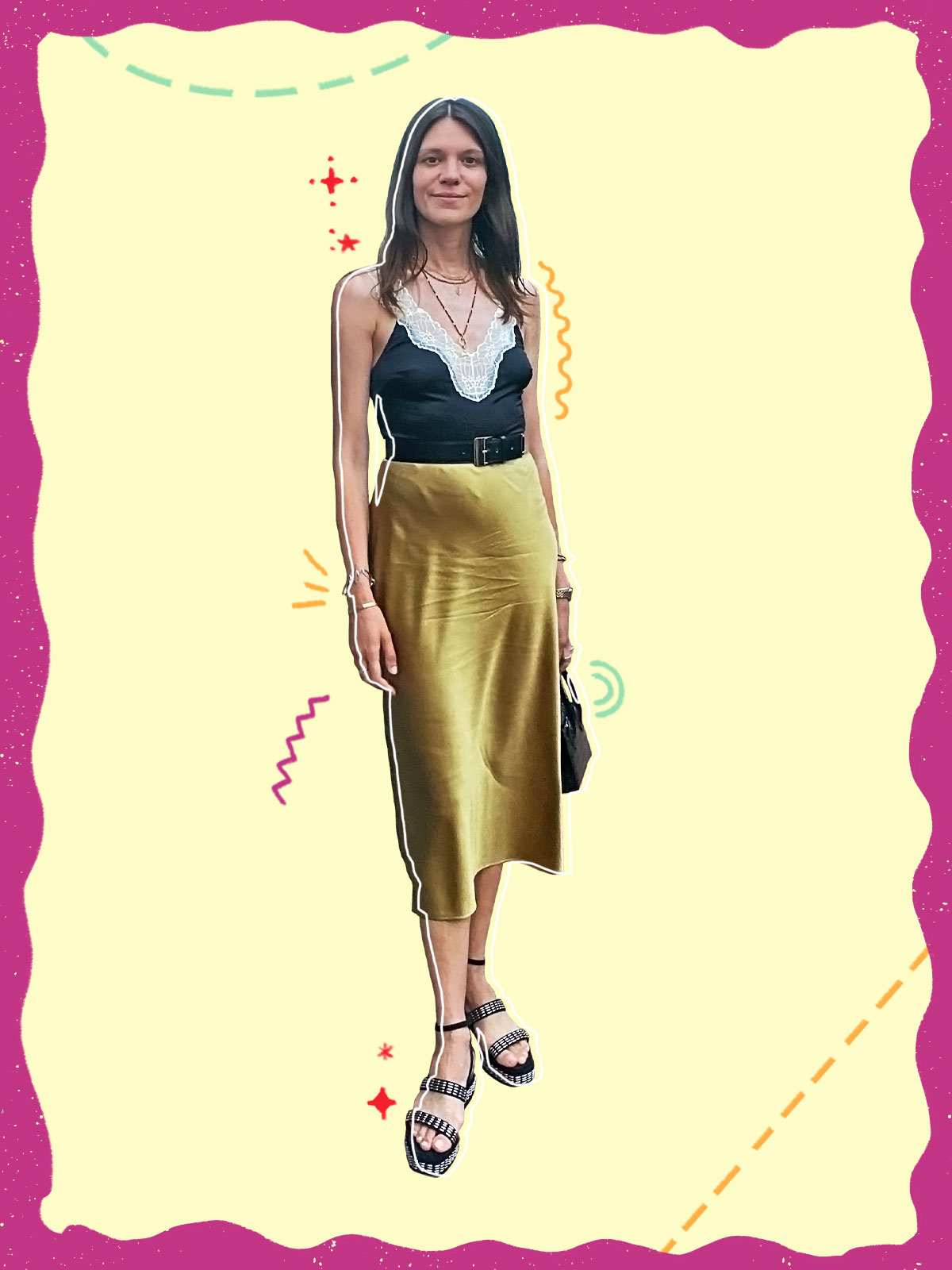
I am wearing a Stella McCartney bodysuit on clearance from TheOutnet, a gifted Hermès belt that was a sample, a made-to-order Careste silk skirt, Alaïa shoes from a sample sale, and a gifted embossed crocodile handbag from Mateo.
I have been very fortunate in my career in fashion to receive access to samples and items that would otherwise be discarded to make space for new inventory. However, it is very possible to shop high-quality secondhand on amazing resale platforms that offer items for prices even better than most sample sales. I recommend looking for items that have tags, meaning they have very minimal wear and are basically new.
I think it’s very important to understand that each item you bring into your world is essentially a permanent decision. While supporting designers who use more considered fabrics or made-to-order production scales, keep in mind that you are responsible for wearing this piece for a very long time or making sure it goes on to a second life where it will be just as loved. I know a high-quality piece that is looking for a good home, whether it is overstock or an actual sample used in photoshoots, will be ensured a long-lasting life with me. Understanding the best way to take care of a quality item can make it last for decades.

Donny Q. Hoang
Biologist and sewist
Madison, Wisconsin
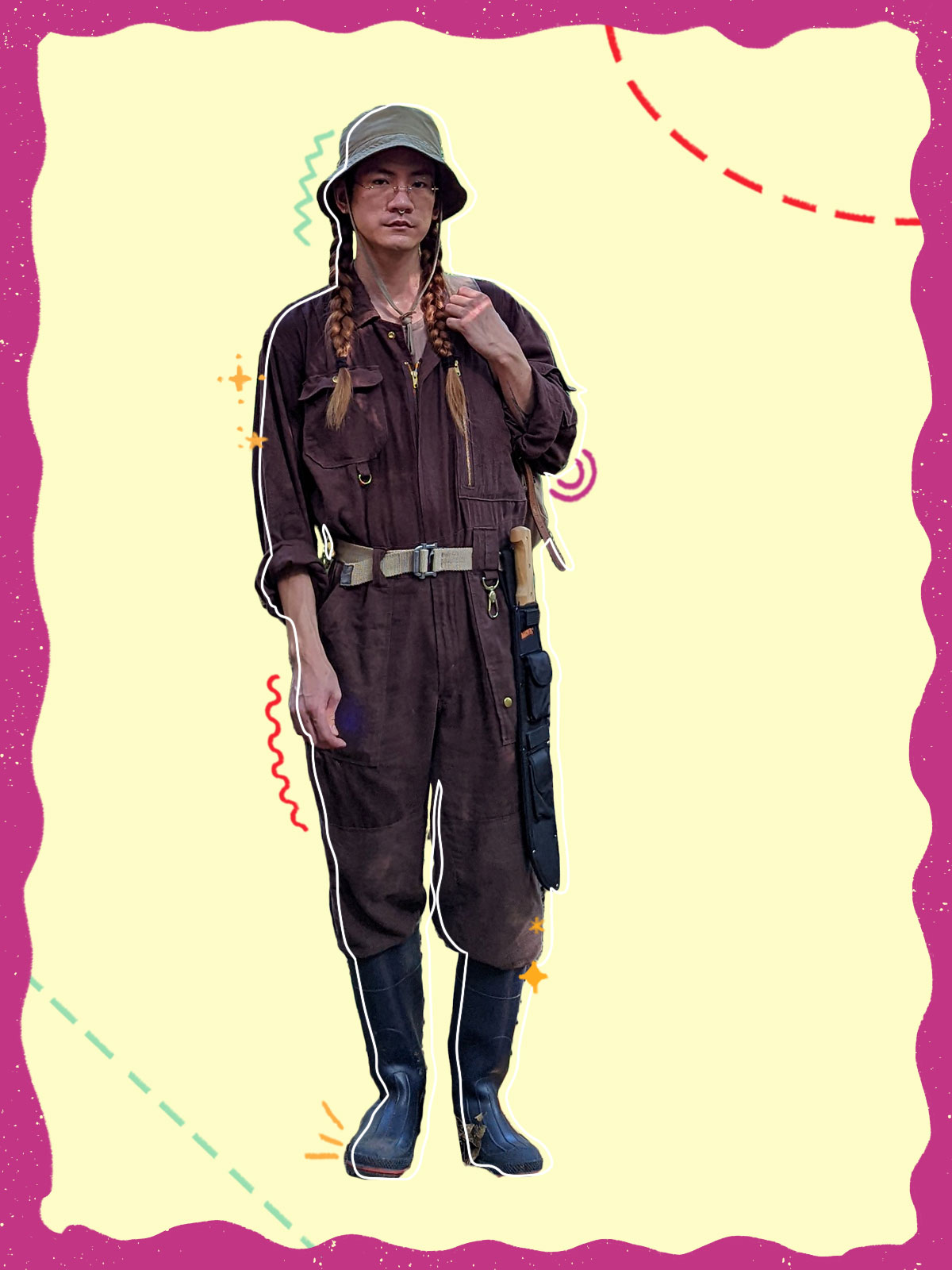
My coveralls are made from linen, my hat is made from a vintage coat that I thrifted, and the rubber boots are borrowed. With the exception of knits and footwear, I try to make all of my own clothing. I normally use natural fibers that I know can decompose more easily. They’re much more comfortable to wear too! I think many people are intimidated by sewing, but you don’t have to make your own clothes. Altering or mending pieces you already own can extend their life and slow down consumption.

Tereneh Idia
Founder and designer, IdiaDega
Pittsburgh, Pennsylvania
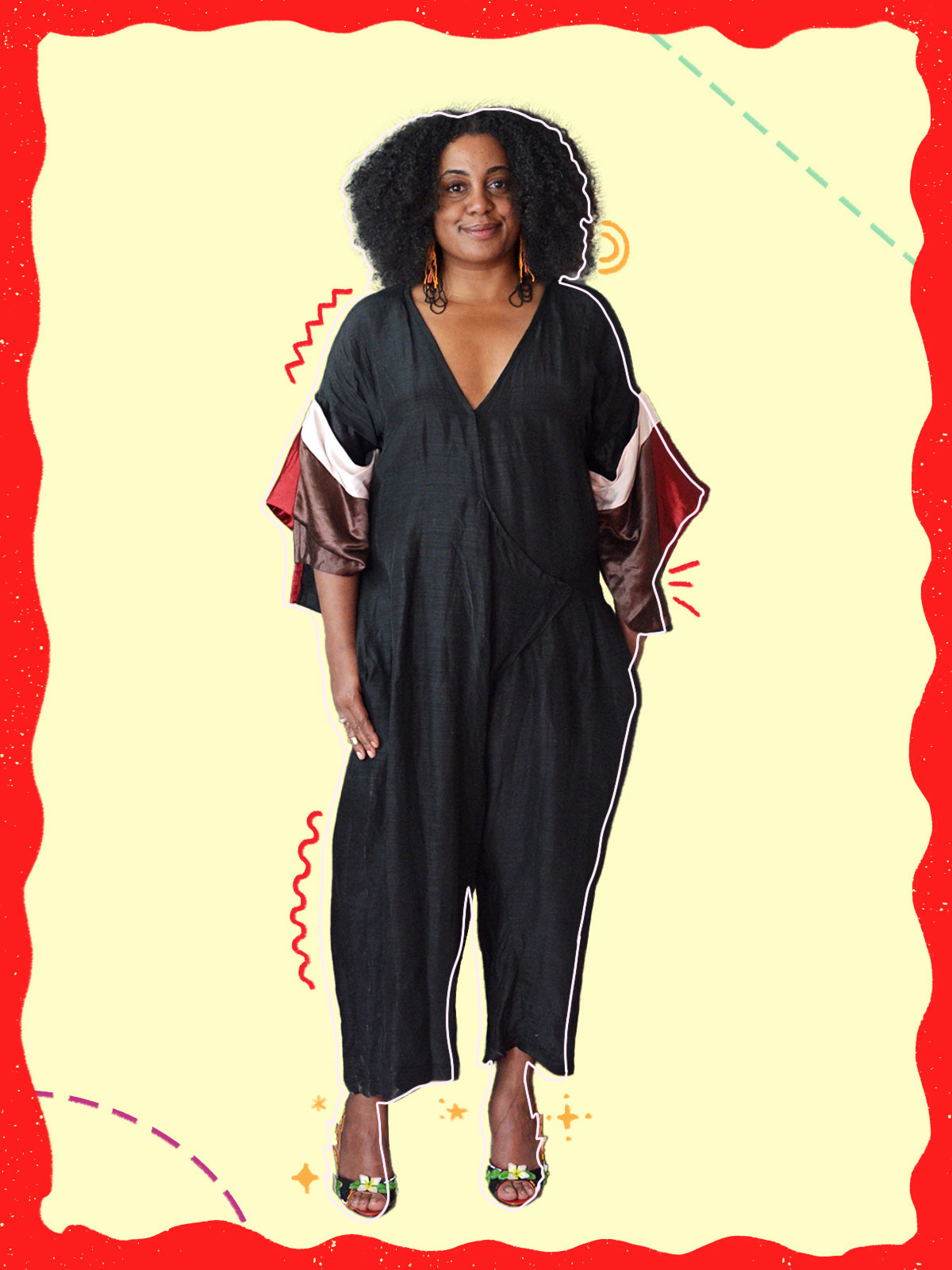
On a daily basis I am wearing something I made or something vintage I have found or “borrowed” indefinitely from my male relatives. I love vintage because of the beautiful fabrics and generally better-constructed clothing.
This outfit is one of my favorites. The jumpsuit actually got a hole in it recently, so I turned it into a blouse which I also wear all of the time and love. The piece is constructed from vintage silk from the 1950s or ‘60s given by a friend whose mom collected fabric; reused silk from the Pittsburgh Center for Creative Reuse; and a hemp silk–organic cotton fabric from Pickering International.
The shoes are suede d’Orsay pumps from the 1950s that I bought on Etsy. The glass beadwork on the shoes was done by women I collaborate with for IdiaDega: members of the Olorgesailie Maasai Women Artisans of Kenya and Holly Gibson of the Oneida Indian Nation of New York, who works in partnership with Oneida artisans under the name Beading Wolves. You see elements of water, fire, and earth in the Maasai abstract beading, and strawberry blossoms from the Oneida tradition. The glass beaded earrings, which represent the sunset, were created by Ms. Gibson.

MI Leggett
Designer and founder of Official Rebrand
New York, New York
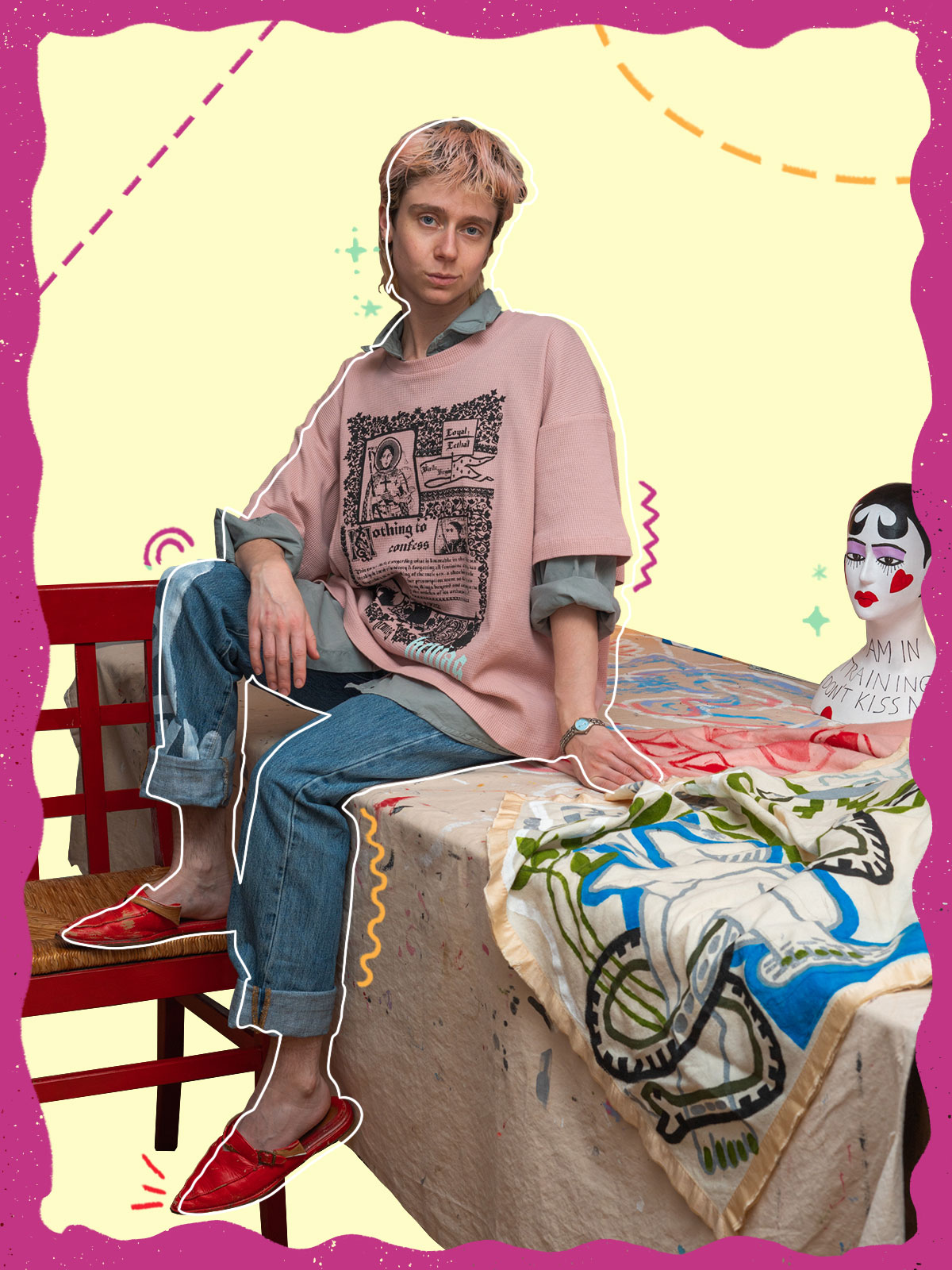
Here I am in my studio wearing a T-shirt for the collection about Joan of Arc I designed for the skatewear brand BRUJAS. It was sewn in Manhattan’s garment district from a deadstock Japanese waffle fabric and printed in Brooklyn with a graphic I designed based on medieval illuminations. The button-up shirt was thrifted. It had some bleach spots on it, so eventually I’ll bleach it even more to give it a new look. The jeans were secondhand, and I painted them a few years ago for my brand, Official Rebrand. The watch I found on the street in Ridgewood. I cleaned it with a toothbrush and got the battery replaced, and now it works great!
I think of my clothes as fluid, and that’s key to keeping my wardrobe both sustainable and fresh. I don’t see garments as being fixed or finished, but change them constantly to fit my needs. I think people should feel more free to cut, paint, stitch and change their clothing more. Creativity and individuality are keys to honing a style that is both personal and sustainable. Mending, swapping, and sharing are also great ways to dress as sustainably as possible without having to spend any money.

Nia Thomas
Founder and creative director of NIA THOMAS
Oaxaca, Mexico
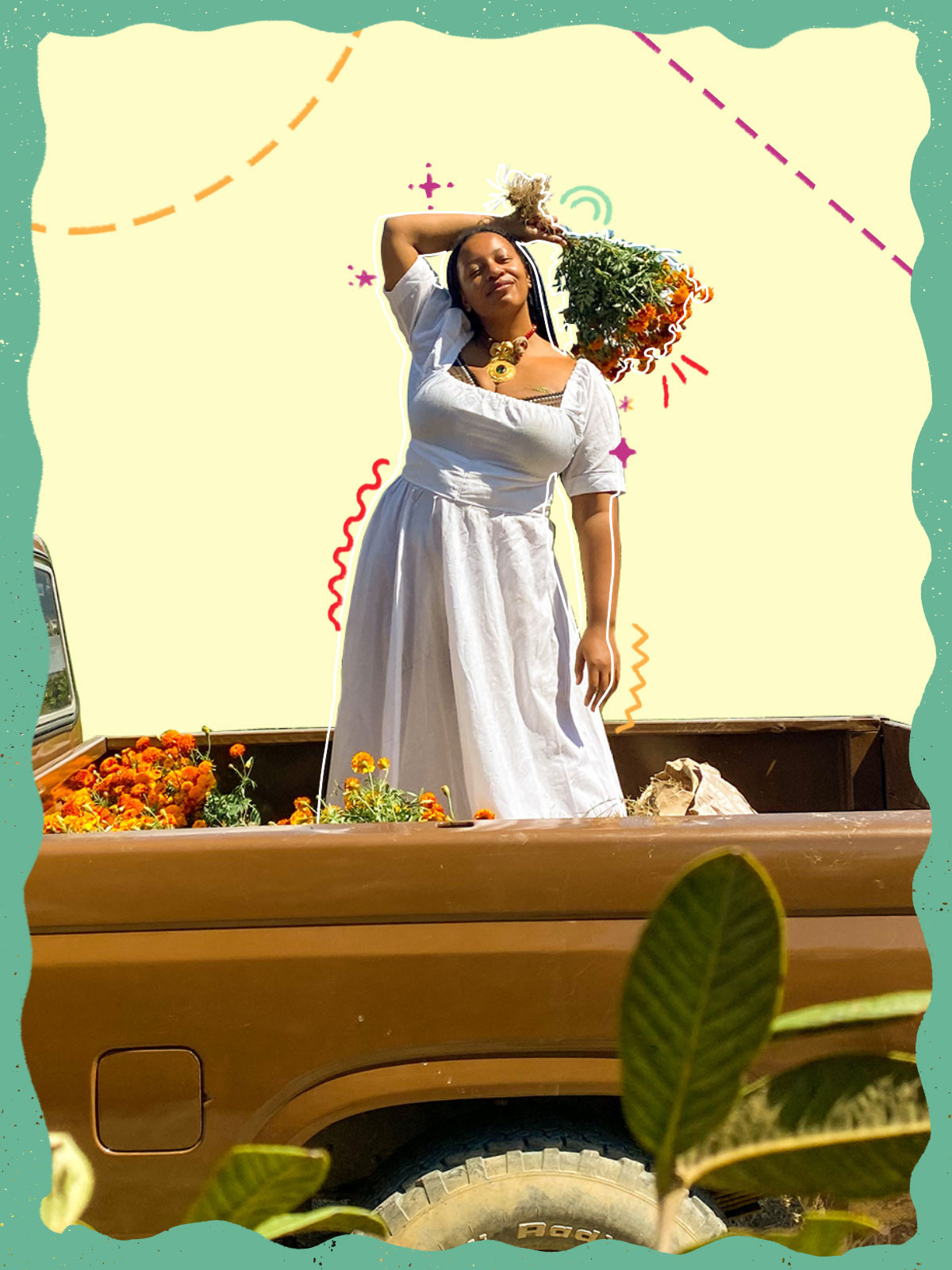
This is a sustainable linen/cotton dress made by women artisans in Oaxaca, Mexico, which I sourced from an independent boutique in Mexico that sells both vintage and festive dresses for Día de los Muertos. The necklace was made by a woman artisan from Oaxaca as well, which I bought at a sustainable crafts fair in Mexico. My piece of advice to people trying to shop sustainably is to always buy quality over quantity, especially from small businesses that are aligned with your ethics.

Savannah Thorpe
Deputy campaign manager, Izzy for Lancaster
Lancaster, Pennsylvania
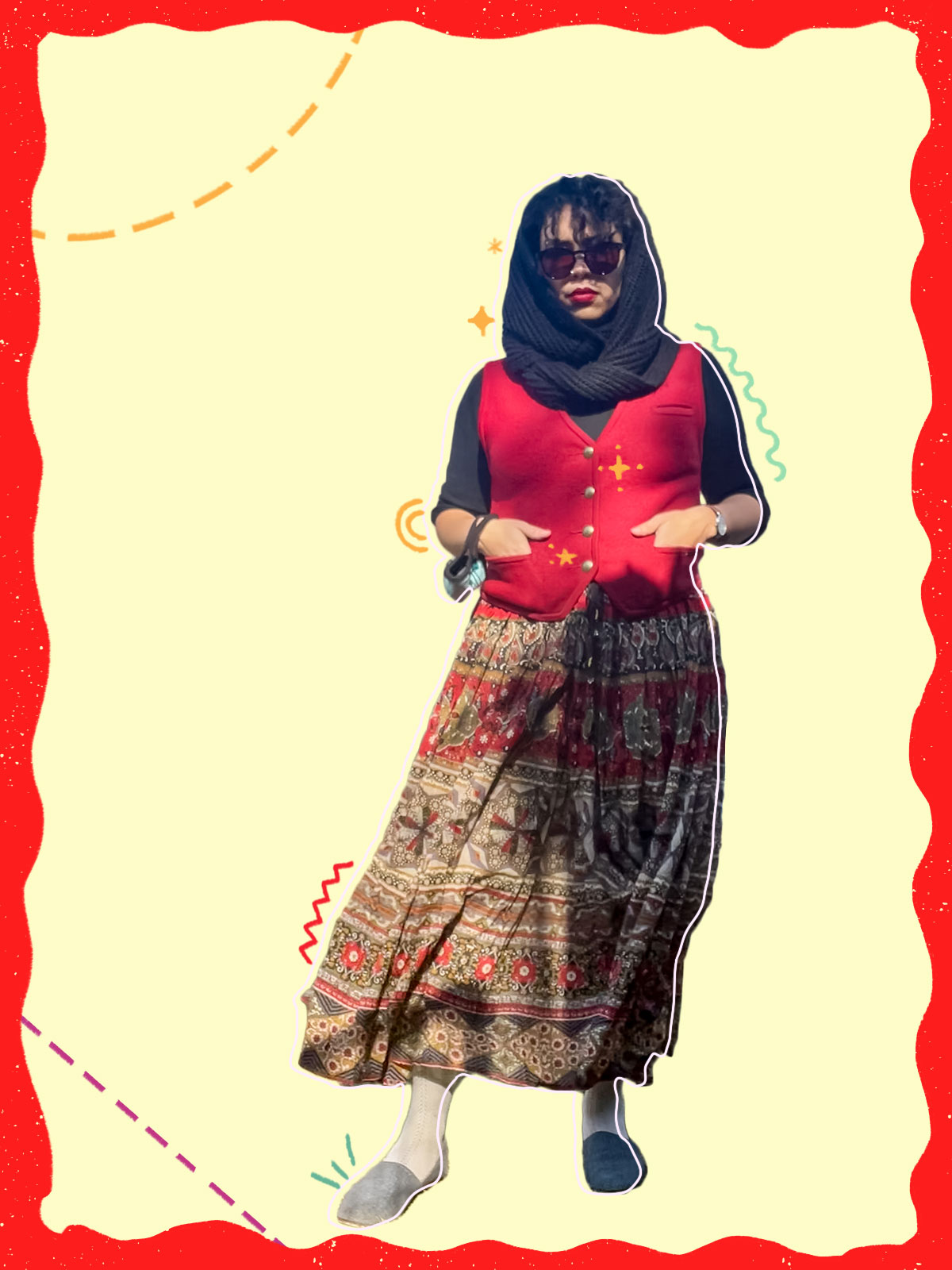
I love putting together pieces that have been sitting in my closet for years and years and finding new ways to give them life! This outfit began with the big flowy skirt, which I inherited when an aunt of mine passed away a few years ago. She brought the piece back from her home in Puerto Rico, and I loved the pattern, colors, and drama.
Next, I decided to pull out some of the colors and start adding other pieces. I found a black long-sleeved top that I got at a secondhand store, and this red wool vest I purchased at a local vintage store a few blocks from my home in downtown Lancaster. Because it’s still winter, I added a pair of tights I’ve had since high school and blue Clarks shoes. Finally, I added an infinity scarf that was a gift from a friend in college, and Humps Optics sunglasses, which uses upcycled and recycled plastic and donates money to a fund to deliver eyeglasses to underserved communities worldwide. I topped the whole thing off with red lipstick.

Ryan Yee
Owner and curator of MonModern
Pittsburgh, Pennsylvania
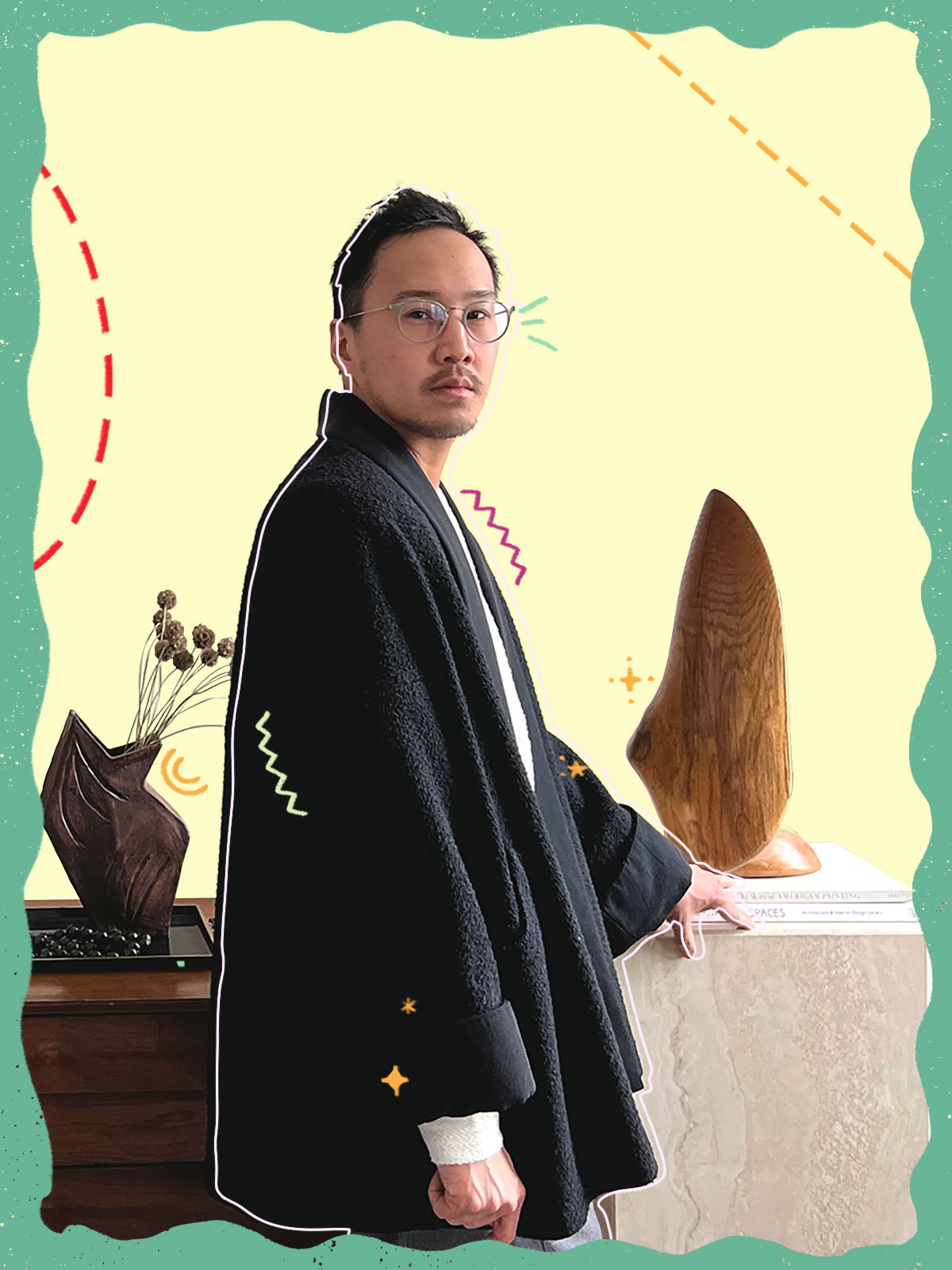
The items I’m wearing here are: a vintage 1960s black tufted kimono-front jacket, a secondhand long sleeve T-shirt, and vintage 1970s wool trousers.
I like to look for higher-quality vintage jackets at vintage-exclusive shops. Vintage retains its value and can even appreciate as the item becomes rarer or more sought after, which is a significant advantage over fast fashion. Thrift stores are where you get the best bang for your buck but require a bit of eye because their selection is less curated. I suggest going thrifting with your favorite thrift friend. Unless you are the same size — then it can be competitive!
Don’t forget you can tailor vintage! That’s one thing that many people overlook when buying something that doesn’t immediately fit. Cleaning can lead down a rabbit hole, so I will keep it simple: OxiClean is your friend, dry-clean your delicates and coats, and an inexpensive steamer can go a long way. YouTube or TikTok have tons of informative videos. I’m constantly learning new tricks on how to keep these treasures pristine.

